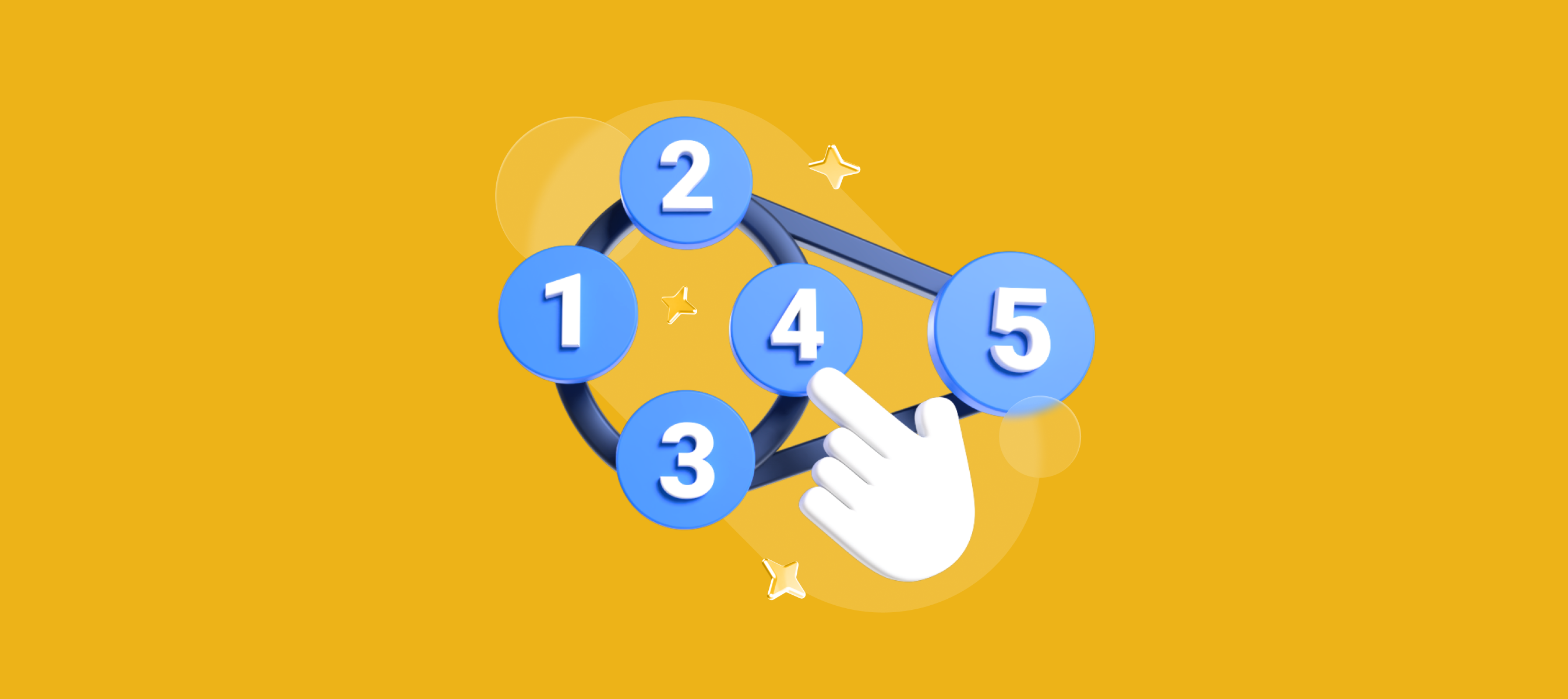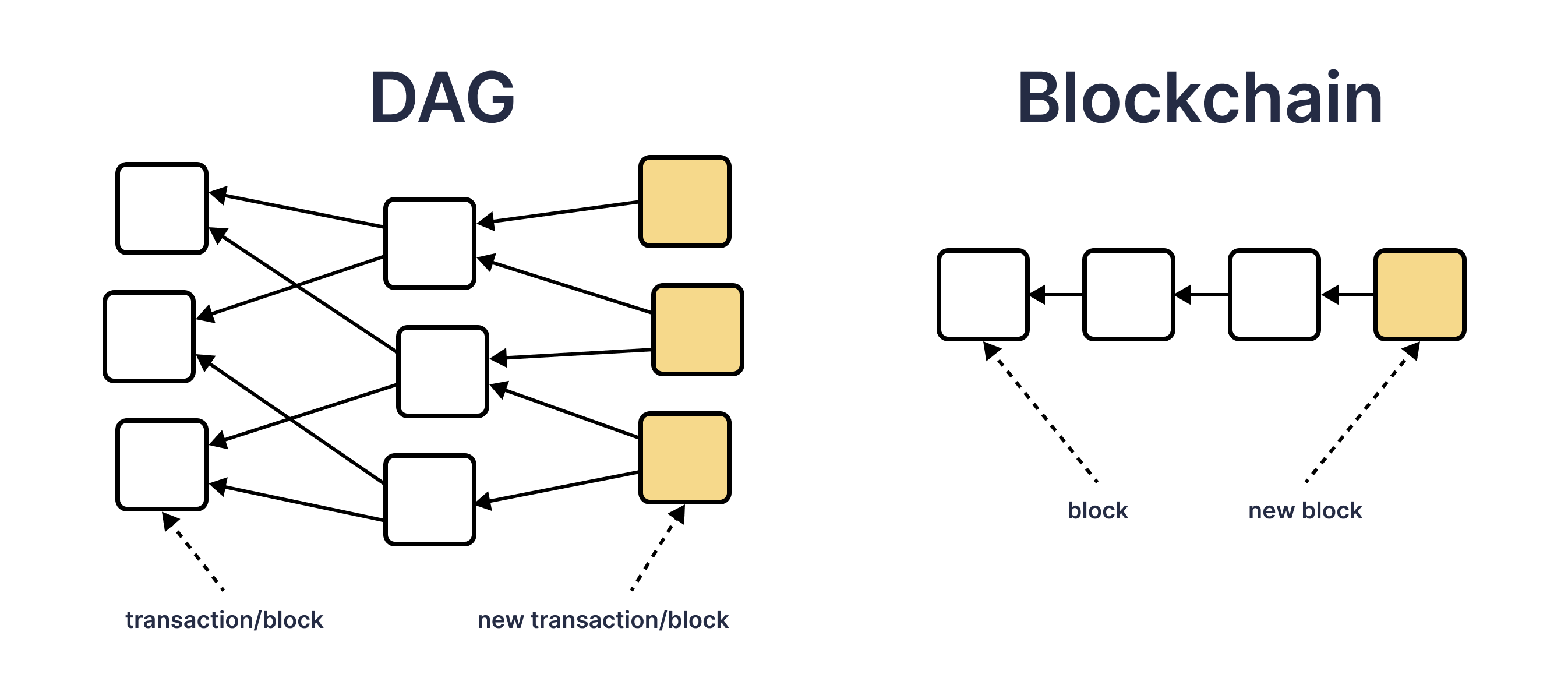The Application of Directed Acyclic Graphs (DAGs)

This blog post will cover:
- What are Directed Acyclic Graphs (DAGs)?
- Properties of DAGs
- Applications of DAGs
- Advantages and Limitations of Using DAGs
- Conclusion
Imagine a roadmap that not only shows you the way but also ensures you never get lost in a loop. This is the essence of Directed Acyclic Graphs (DAGs). These unique structures in computer science and mathematics provide a robust framework for modeling intricate relationships without the confusion of circular paths. From revolutionizing data processing and machine learning to transforming blockchain technology, DAGs are at the heart of many modern innovations, offering clarity and efficiency in an increasingly complex digital world. In the following text, we will cover the basics and take a sneak peak into what DAGs are known for.
What are Directed Acyclic Graphs (DAGs)?
Directed acyclic graphs are a unique concept in the field of computer science and mathematics. It is a directed graph that does not contain any directed cycles. This means that if you start at any node (or vertex) and traverse along the edges (or arcs), you will never return to the starting node.
A DAG consists of vertices, or nodes, and directed edges. Each edge has an initial node, referred to as its parent, and a terminal node, called its child. This parent-child relationship is what gives the graph its directionality.
In the context of cryptocurrency, DAGs are a type of data structure used to record transactions. Unlike traditional blockchain systems that use a linear chain of blocks, DAGs organize transactions in a graph form where each transaction points to one or more previous transactions.
Here’s a simple breakdown, which is an introduction into directed acyclic graph :
Directed: each transaction points to another one in a specific direction.
Acyclic: the graph has no cycles, meaning you can't start from one transaction and loop back to it.
Graph: it is a network of transactions connected by these directional links.
In a DAG-based cryptocurrency, transactions are verified by being linked to multiple previous transactions, making the system more scalable and efficient compared to traditional blockchains.
Properties of DAGs
DAGs have several key properties that are useful within the realm of digital currencies. For instance, the topological ordering - a sequence of the vertices such that every edge is directed from earlier to later in the sequence. But that’s not all - there are more interesting properties worth exploring, which make DAGs a useful tool in the crypto field.
Topological ordering: in a DAG, there exists a sequence of the vertices such that every edge is directed from earlier to later in the sequence. This property ensures that transactions are processed in an orderly manner, preventing double-spending and maintaining the integrity of the transaction history.
Acyclicity: as the name suggests, DAGs are acyclic. This means they do not contain any directed cycles. This is crucial in cryptocurrencies to prevent circular dependencies and maintain a clear, unambiguous transaction history.
Causal relationships: DAGs can be interpreted as representing causal relationships. The non-parametric structural equations encode counterfactual relationships amongst the variables represented on the graph. This could represent the flow of currency, with each edge representing a transaction from one party to another.
Data structure: DAGs are a type of data structure that is used to convert fundamental blocks. They simplify fundamental block transformation and are useful tools for spotting common sub-expressions. One of the examples of directed acyclic graphs in projects is IOTA, the DAG structure (known as the Tangle) is used instead of a traditional blockchain, allowing for faster processing times and increased scalability.
Assumptions representation: a DAG illustrates the assumptions about relationships between variables, often referred to as nodes in graph terminology. These assumptions are represented by directed edges, which are lines with arrowheads pointing from one node to another, indicating the direction of influence. In crypto, these nodes could represent wallets or individual transactions, and the edges could represent the flow of currency.
Factorization criterion: there is a factorization criterion characterizing the Markovian model that generalizes the well-known recursive factorization for DAGs. This could be used to model probabilistic relationships between transactions, potentially aiding in fraud detection and network analysis.
Applications of DAGs
DAGs have diverse applications across various fields due to their ability to efficiently model dependencies and processes. Below are some notable examples of how the concept is utilized:
Data Processing Frameworks
DAGs are used in data processing frameworks like Apache Spark, Apache Flink, and Apache Beam to model data transformations. They enable efficient handling of large-scale data by decomposing complex tasks into smaller, manageable ones and establishing the dependencies between them.
Blockchain Technology
In the realm of blockchain technology, DAGs hold a special place in cryptocurrencies like IOTA and Hashgraph. They provide a scalable and efficient alternative to traditional blockchain structures by allowing for simultaneous processing of transactions, which can lead to increased throughput and reduced transaction times.
Machine Learning
DAGs are utilized in machine learning algorithms such as Gradient Boosting and Random Forests to structure decision trees. They help in visualizing the decision-making process and understanding the relationships between different variables.
Software Build Systems
Software build systems like Make and Bazel use DAGs to track dependencies and determine the order of tasks. This helps in efficient management of complex software builds, ensuring that tasks are executed in the correct order and avoiding unnecessary recompilations.
Project Management
In project management, they are used in scheduling and management tools like Microsoft Project to model task dependencies. They help in planning and scheduling tasks, identifying critical paths, and managing project timelines.
Advantages and Limitations of Using DAGs
DAGs offer several benefits and pose certain challenges when used in cryptocurrency systems. Below, we explore the key advantages and limitations associated with it.
Advantages of DAGs
Scalability: DAGs can handle a large number of transactions or nodes, making them suitable for complex and growing systems. This ensures that the system can support increased usage without significant performance degradation.
Efficiency: they allow for parallel processing of transactions, leading to faster completion times. This efficiency is particularly beneficial in high-throughput environments where quick transaction processing is crucial.
Flexibility: DAGs can be easily modified by adding or removing nodes without affecting the entire structure. This adaptability simplifies the process of updating and optimizing the system when necessary
Limitations of DAGs
Complexity: the structure of a DAG can be complex, making it challenging to visualize and understand. This can pose difficulties for developers and users trying to comprehend the system's workings.
Expertise required: effective use of DAGs often requires specialized knowledge in graph theory and related algorithms. This need for expertise can limit the number of individuals capable of working with DAG-based systems.
Maintenance: as the size of a DAG grows, it can become more difficult to maintain and update. Ensuring the system remains efficient and error-free can require significant ongoing effort and resources.
Conclusion
In essence, DAGs are more than just theoretical constructs; they are practical tools reshaping how we handle complex systems. From enhancing data processing efficiencies to pioneering advancements in blockchain and machine learning, they offer a versatile and scalable solution to modern computational challenges. As we continue to push the boundaries of technology, the potential for DAGs to drive innovation and streamline processes will only grow, cementing their place at the forefront of technological progress. However, the subject is likely to need further examination - stay ahead of the curve and keep alert for new updates.
SimpleSwap reminds you that this article is provided for informational purposes only and does not provide investment advice. All purchases and cryptocurrency investments are your own responsibility.


